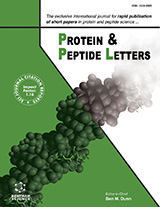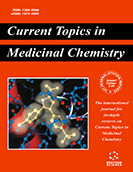Abstract
Several studies have reported differences in physiological and pathological phenotypes between different strains of experimental mice, such as environment-based behavior, skin damage, damage in response to toxins and nervous system injury. However, the mechanisms underlying these differences have not yet been fully elucidated. We have been studying the function of kallikrein-related peptidases (KLKs), serine proteases known to serve a variety of functions. In this study, we focused on differences in KLKs between C57BL/6 mice and 129 mice. Among 13 KLKs genes examined, 12 KLKs showed differences in the mRNA coding region sequence and 7 KLKs showed different deduced amino acid sequences of their proteins when comparing C57BL/6 and 129 mice. KLK6 protein from 129 mice had six amino acid differences compared with that from C57BL/6 mice. KLK6 protein from 129 mice showed reduced SDS-PAGE mobility compared with that from C57BL/6 mice. Moreover, recombinant KLK6 protein from 129 mice had a higher optimum pH and >15 times higher hydrolytic enzymatic activity for several substrates than that from C57BL/6 mice. These results suggest that KLKs may contribute to the genetic basis of the differences between mouse strains.
Keywords: 129 mouse, C57BL/6 mouse, enzymatic activity, kallikrein-related peptidase, mouse strains, protease.
Graphical Abstract
Protein & Peptide Letters
Title:Differences in Kallikrein-Related Peptidase mRNA Sequences and KLK6 Enzyme Activity between Mouse Strains
Volume: 22 Issue: 3
Author(s): Koichi Murakami, Tatsuhide Tanaka, Yoshio Bando and Shigetaka Yoshida
Affiliation:
Keywords: 129 mouse, C57BL/6 mouse, enzymatic activity, kallikrein-related peptidase, mouse strains, protease.
Abstract: Several studies have reported differences in physiological and pathological phenotypes between different strains of experimental mice, such as environment-based behavior, skin damage, damage in response to toxins and nervous system injury. However, the mechanisms underlying these differences have not yet been fully elucidated. We have been studying the function of kallikrein-related peptidases (KLKs), serine proteases known to serve a variety of functions. In this study, we focused on differences in KLKs between C57BL/6 mice and 129 mice. Among 13 KLKs genes examined, 12 KLKs showed differences in the mRNA coding region sequence and 7 KLKs showed different deduced amino acid sequences of their proteins when comparing C57BL/6 and 129 mice. KLK6 protein from 129 mice had six amino acid differences compared with that from C57BL/6 mice. KLK6 protein from 129 mice showed reduced SDS-PAGE mobility compared with that from C57BL/6 mice. Moreover, recombinant KLK6 protein from 129 mice had a higher optimum pH and >15 times higher hydrolytic enzymatic activity for several substrates than that from C57BL/6 mice. These results suggest that KLKs may contribute to the genetic basis of the differences between mouse strains.
Export Options
About this article
Cite this article as:
Murakami Koichi, Tanaka Tatsuhide, Bando Yoshio and Yoshida Shigetaka, Differences in Kallikrein-Related Peptidase mRNA Sequences and KLK6 Enzyme Activity between Mouse Strains, Protein & Peptide Letters 2015; 22 (3) . https://dx.doi.org/10.2174/0929866522666150209113108
| DOI https://dx.doi.org/10.2174/0929866522666150209113108 |
Print ISSN 0929-8665 |
| Publisher Name Bentham Science Publisher |
Online ISSN 1875-5305 |
 24
24 2
2 1
1
- Author Guidelines
- Bentham Author Support Services (BASS)
- Graphical Abstracts
- Fabricating and Stating False Information
- Research Misconduct
- Post Publication Discussions and Corrections
- Publishing Ethics and Rectitude
- Increase Visibility of Your Article
- Archiving Policies
- Peer Review Workflow
- Order Your Article Before Print
- Promote Your Article
- Manuscript Transfer Facility
- Editorial Policies
- Allegations from Whistleblowers

















.jpeg)








